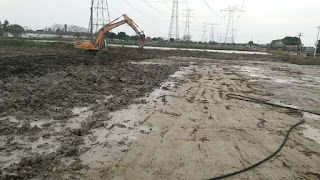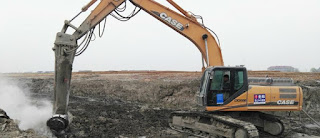Development direction of soil pollution remediation technology
1.Developing comprehensive soil remediation technology.
The single remediation technology can not meet the current demand for contaminated soil treatment, and the future research direction should be the organic combination of various technologies. For example, the combination of plant microbial remediation, integrated oxidation reduction,, a new in situ composite repair technology combined with flushing and reactive wall technology, phytoremediation combined with physical and chemical remediation, and so on.
2.Give full consideration to ecological benefits.
While considering economic benefits, ecological benefits should be taken into full consideration. As a result, bioremediation, especially phytoremediation, will become the mainstream in future remediation technologies.
3.Focus on improving the existing advanced technology.
For phytoremediation, more and better heavy metal enrichment plants can be found, screened and domesticated. Or, by using genetic engineering technology, the tolerance genes of hyperaccumulator were transplanted into the plants with large biomass and rapid growth, so that phytoremediation could be industrialized. For microbial remediation, gene engineering bacteria with strong stress resistance and strong ability of decomposition can be developed by gene recombination.
4.Attach importance to theoretical research.
Increasing the mechanisms of bioremediation especially, such as studying the mechanisms of plant microbe interactions, or figure out the genes responsible for plant tolerance and the principle of enriching heavy metals. It is helpful to develop new plant varieties and improve the efficiency of phytoremediation system. Before the introduction of hyperaccumulator, it is necessary to fully demonstrate whether it will cause negative effects such as biological invasion, and can not wait until the serious consequences have been found.
5.Continue to try in practice.
The study of theory will eventually be put into practice. The environmental requirements of bioremediation is quite stringent, such as soil properties, temperature, pH, nutritional conditions, etc. These need us to constantly adjust in practice, and finally find the best conditions. For hyperaccumulator, it should be harvested at proper time, and reasonable treatment methods should be adopted. Not only can avoid the second pollution, but also can improve the economic benefit. Therefore, the proper disposal and utilization of harvested plants is the key to the industrialization of phytoremediation technology, which can be used as a research direction in the future.


PARFECT soil remediation equipment can transfer the chemical agent through the air compressor to the mixing head which is mounted on the excavator, and mix with the soil.
Learn more about in situ soil remediation
The single remediation technology can not meet the current demand for contaminated soil treatment, and the future research direction should be the organic combination of various technologies. For example, the combination of plant microbial remediation, integrated oxidation reduction,, a new in situ composite repair technology combined with flushing and reactive wall technology, phytoremediation combined with physical and chemical remediation, and so on.
2.Give full consideration to ecological benefits.
While considering economic benefits, ecological benefits should be taken into full consideration. As a result, bioremediation, especially phytoremediation, will become the mainstream in future remediation technologies.
3.Focus on improving the existing advanced technology.
For phytoremediation, more and better heavy metal enrichment plants can be found, screened and domesticated. Or, by using genetic engineering technology, the tolerance genes of hyperaccumulator were transplanted into the plants with large biomass and rapid growth, so that phytoremediation could be industrialized. For microbial remediation, gene engineering bacteria with strong stress resistance and strong ability of decomposition can be developed by gene recombination.
4.Attach importance to theoretical research.
Increasing the mechanisms of bioremediation especially, such as studying the mechanisms of plant microbe interactions, or figure out the genes responsible for plant tolerance and the principle of enriching heavy metals. It is helpful to develop new plant varieties and improve the efficiency of phytoremediation system. Before the introduction of hyperaccumulator, it is necessary to fully demonstrate whether it will cause negative effects such as biological invasion, and can not wait until the serious consequences have been found.
5.Continue to try in practice.
The study of theory will eventually be put into practice. The environmental requirements of bioremediation is quite stringent, such as soil properties, temperature, pH, nutritional conditions, etc. These need us to constantly adjust in practice, and finally find the best conditions. For hyperaccumulator, it should be harvested at proper time, and reasonable treatment methods should be adopted. Not only can avoid the second pollution, but also can improve the economic benefit. Therefore, the proper disposal and utilization of harvested plants is the key to the industrialization of phytoremediation technology, which can be used as a research direction in the future.


PARFECT soil remediation equipment can transfer the chemical agent through the air compressor to the mixing head which is mounted on the excavator, and mix with the soil.
Learn more about in situ soil remediation

评论
发表评论